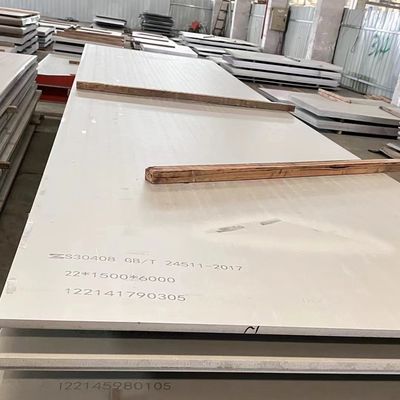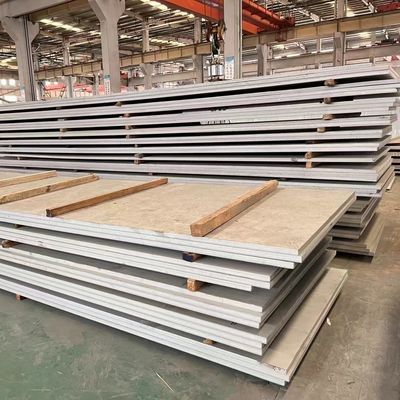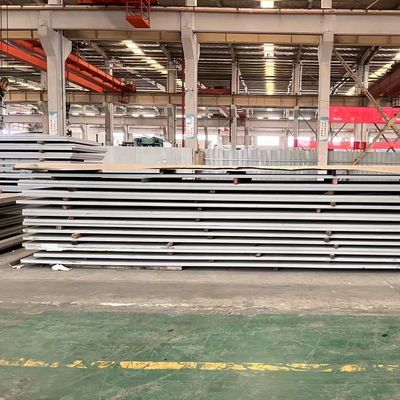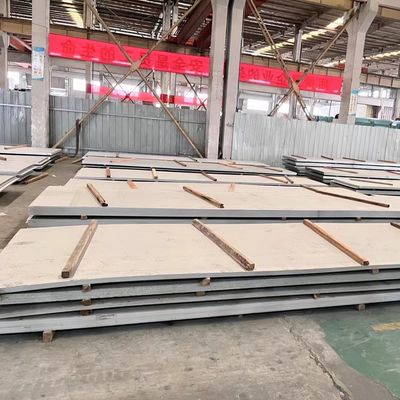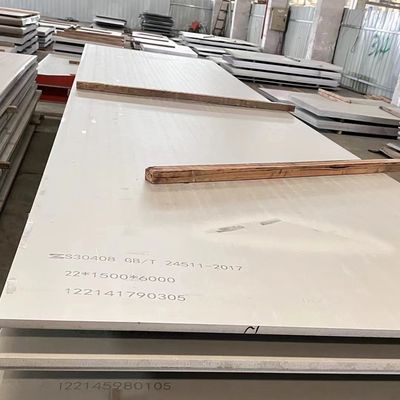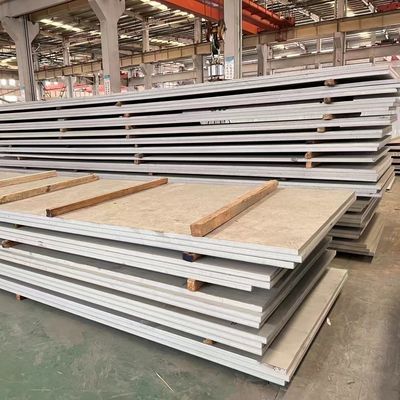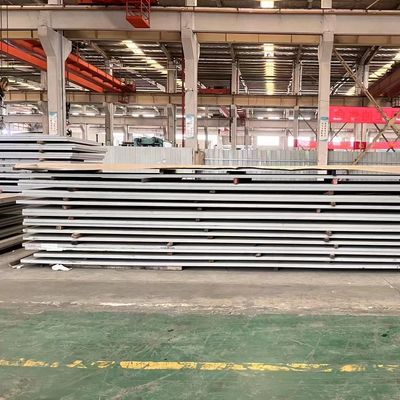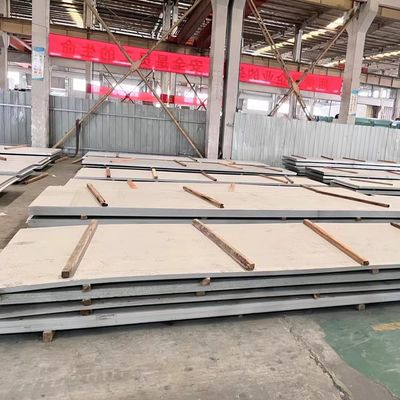-
 Raian IonescuMaterial quality very good. we have cooperate more than 10 Years. They trade lots kinds of steel material. All material quality good. They duty for all material quality. We are planing continue cooperate with them in the future
Raian IonescuMaterial quality very good. we have cooperate more than 10 Years. They trade lots kinds of steel material. All material quality good. They duty for all material quality. We are planing continue cooperate with them in the future
Hot Rolled 410 420 430 Stainless Steel Plate Thickness 3.0 - 12.0mm SS Plate 400 Series Stainless Steel
| Place of Origin | China |
|---|---|
| Brand Name | DELTA |
| Certification | ISO |
| Model Number | 201 202 218 304 316L 309S 310S 317L 321 347 904L 2205 2507 925 926.etc |
| Minimum Order Quantity | 500 kgs |
| Price | 2400 - 3500 USD/Ton |
| Packaging Details | wooden pallets + waterproof paper |
| Delivery Time | 5 - 12 days based on the quantity |
| Payment Terms | L/C, T/T, Western Union |
| Supply Ability | 5Ton per week |

Contact me for free samples and coupons.
Whatsapp:0086 18588475571
Wechat: 0086 18588475571
Skype: sales10@aixton.com
If you have any concern, we provide 24-hour online help.
x| Products | Stainless Steel Sheet & Plate | Grade | 201 202 218 304 310S 310H 316L 317L 409L 430.etc |
|---|---|---|---|
| Standard Size | 1000*2000mm 1219*2438mm 1500*6000mm | Thickness | 0.6 - 60.0mm |
| Brand | TISCO BAOSTEEL POSCO LISCO | Loading Port | Shanghai Port |
| MOQ | 500 Kgs | Packing | Wooden Pallets + Waterproof Paper |
| Highlight | stainless plate,ss plate,custom stainless steel plates |
||
Hot Rolled 410 420 430 Stainless Steel Plate Thickness 3.0 - 12.0mm SS Plate 400 Series Stainless Steel
More Specification of 409L Stainless Steel Plate
| Products | Stainless Steel Plate |
| Thickness | 0.6 - 60.0mm |
| Width | 1000mm 1219mm 1500mm 1800mm 2000mm or other width as request |
| Length | 2000mm 2438mm 3000mm 6000mm or other length as request |
| Grade | 201 202 301 304 304L 304H 309S 310S 310H 316L 316Ti 317L 321 347 409L 410 420 430 431 436L 439 441 443 444 2205 2507 904L 600 625 800 825 718 253MA 254SMO Nitronic 60 925 926.etc |
| Service | Laser Cutting, Surface processing, bending |
| Brand | TISCO BAOSTEEL POSCO LISCO JISCO |
| Standard | ASTM JIS GB DIN EN BS |
| Certificate | ISO MTC C/O F/E |
| Packing | Wooden pallets and waterproof paper |
| Deliver time | 5 - 15 days |
| Loading port | Shanghai Port |
What Is the Stainless Steel 400 Series?
Stainless steel was first discovered by an English metallurgist Harry Brearley in the early 1900s. The goal was to make a type of rustless steel for gun barrels that would resist damage from the combustion of gases.
The development of the 400 series was a significant milestone in the history of stainless steel since they have now become one of the most widely used stainless steel categories.
SS 400 series is ferritic and magnetic, consisting of metals like chromium, nickel, or manganese. Alloys in this series also have a low carbon content than others, making them less prone to corrosion.
400 series’ steels are essential in various industries, including automotive, construction, and medical. Their magnetic properties also make them suitable for applications that require magnetism, such as motors and generators. The versatility, strength, and resistance to wear and tear make these materials famous for manufacturing.
What Is the Chemical Composition of the SS 400 Series?
The metals in this series are best described as a group of ferritic and martensitic stainless steel alloys. They comprise varying amounts of chromium, carbon, and other elements. The exact chemical composition of SS series 400 varies depending on the type and grade of the alloy.
Generally,
- The SS 400 series contains more chromium than other types of stainless steel, which gives them their corrosion-resistant properties.
- They also have a relatively lower carbon content. This makes them less brittle and easier to work with.
Ferritic and Martensitic Properties.
Since the 400 series have alloys of both ferritic and martensitic stainless steels, they inherit the properties of both types of steel. However, their mixtures (the alloy) balance out the drawbacks of the individual components. Let’s compare them side by side.
| Ferritic steel. | Martensitic Steel. |
| Comparatively less corrosive. | More Cossosive. |
| Not as tough as martensitic steel. | Stronger than ferritic steel. |
| Has a body-centered cubic structure. | Has a face-centered cubic structure. |
The Chemical Components.
The chemical composition of the 400 SS series can change depending on the specific alloy. However, most alloys in this series contain the following:.
- 10-30% chromium. – this makes them significantly heat and corrosion-resistant.
- 0.05-0.15% carbon. – enhances their toughness, formability, and strength.
- Varying amounts of nickel, manganese, and other elements – enhance the mechanical properties.
Some common grades SS 400 series include 409, 410, 430, and 440.
- 409 is a low-cost option often used for automotive exhaust systems due to its high-temperature durability.
- 410-grade stainless steel is rigid and more wear-resistant. It is often used in cutlery, medical instruments, and steam turbine blades.
- 430 is an economical grade commonly used in applications that do not require high corrosion resistance, such as automotive trim.
- 440 is a high-end, martensitic stainless steel known for its exceptional hardness and wear resistance, making it a popular choice for surgical tools and bearings.
Physical Properties of the 400 SS Series
The alloys in the 400 series are versatile. They are popular in many sectors due to their heat resistance, corrosion resistance, strength, and durability. Let’s discuss their physical properties.
-
Corrosion Resistance.
SS 400 series alloys offer significant corrosion resistance as they contain more than 10.5% chromium. This metal forms a stable layer on the steel’s surface – a passive film – that prevents oxygen and moisture from interacting with steel, preventing rust and corrosion.
-
Strength and Durability
Due to its alloying elements, the 400 steel series has higher strength and durability than many other types of steel, particularly carbon steel.
Compared to other stainless steel alloys, such as austenitic stainless steel, these metal alloys have a lower nickel and a higher carbon content, making them less ductile but more robust and more durable.
-
Magnetic Properties.
The presence of ferrite makes these alloys magnetic.
SS 400 series’ magnetic properties make them worthwhile for applications requiring magnetism, such as motors, generators, and transformers.
-
Heat Resistance.
SS 400 alloys have good heat resistance. This makes them useful for applications expected to be exposed to high temperatures.
Note that their high carbon content makes them prone to sensitization, which can cause the alloy to lose its corrosion resistance and mechanical properties when exposed to high temperatures for an extended period.
Common SS 400 Series Grades.
Let’s discuss the different SS 400 alloys.
-
Type 410.
Type 410 stainless steel is a general-purpose stainless steel that is often used in applications where high strength, moderate corrosion resistance, and heat resistance are required.
As it contains 11.5% to 13.5% chromium, you can expect it to be chemically and thermally stable. It is stable against corrosion and can be thermally treated to increase its hardness and strength. Type 410 SS is commonly used in applications such as cutlery, steam and gas turbine blades, valve components, and pump parts.
-
Type 416
This type of SS is a free-machining martensitic stainless steel that contains sulfur. This sulfur content makes it easier to machine but reduces its corrosion resistance. It contains 12% to 14% chromium and 0.15% to 0.35% sulfur.
SS 416 is commonly used to produce nuts, bolts, screws, and gears.
-
Type 420.
SS 420 is a high-carbon martensitic stainless steel that also contains 12% to 14% chromium. You can employ it in use cases requiring high strength and moderate corrosion resistance.
You can thermally treat it to make it stronger and harder. It is commonly used in surgical instruments, cutlery, and dental and surgical equipment applications.
-
Type 430
Type SS 430 is non-hardenable stainless steel that contains 16% to 18% chromium. It is often used in applications that need chemical stability at a low cost. It is magnetic, and it can be easily formed and welded.
430 SS is commonly used in automotive trim and molding applications, kitchen equipment, and interior architectural trim.
Industrial Applications of SS Series 400
The unique properties of these alloys have made them an ideal material for various applications, such as machine parts and medical implants.
Let’s discuss the uses of 400 series stainless steel in more detail in each industry.
-
Manufacturing Industries
The 400 SS series is commonly used in manufacturing industries. You can make machine parts, equipment, and tools—for example, nuts, bolts, screws, and fasteners, from these alloys.
-
Automotive Industry
These metal alloys are commonly used in the automotive industry due to their strength. They are used in making various automotive components, such as exhaust systems, fuel tanks, and brake components.
Examples of their use in the automotive industry include the production of exhaust pipes, mufflers, and catalytic converters.
-
Construction Industry
The SS series 400 is used in the construction industry for its strength and toughness. It is commonly used for manufacturing architectural structures, handrails, and equipment.
Examples of its use in the construction industry include the production of building facades, elevator doors, and railing systems.
-
Medical Industry
They are also used in the medical industry due to their corrosion resistance and biocompatibility. They are used to manufacture medical instruments and devices such as surgical tools, dental instruments, and orthopedic implants.
Some examples of their use include the production of scalpels, dental probes, and bone screws.
Advantages of SS 400 Series Alloys.
Alloys in this series are versatile and reliable, with many advantages over other steels. Their cost-effectiveness, ease of manufacture, maintenance, and resistance to wear and tear make them a popular choice for various applications.
Here are some of the advantages of using steels from the 400 series:
-
Cost-Effective
One of the most significant advantages of using the SS series 400 is that it is a cost-effective option compared to other types of stainless steel. This is due to its lower nickel content.
Consequently, these alloys are optimal for applications where budget is a primary consideration.
-
Easy to Manufacture
The 400 SS series is also easy to manufacture, so it can be produced quickly and efficiently. Compared to other types of steels, such as martensitic stainless steels, the 400 series is easier to manufacture.
It has lower carbon content, which makes it easier to form and shape during manufacturing processes.
-
Easy to Maintain
The alloys in the 400 SS series are easier to maintain. They are resistant to corrosion and rust, requiring less maintenance than other materials, such as carbon steel.
For instance, Carbon steel requires protective coatings or regular maintenance to prevent corrosion. In contrast, SS 400 alloys can resist corrosion even in harsh environments.
-
Resistant to Wear and Tear
Another advantage of using materials from 400 series stainless steel is that they are highly resistant to wear and tear. They are durable and long-lasting – optimal for applications that require a strong and sturdy material.
Stainless steel is highly durable when compared to carbon steel. Carbon steel can quickly deteriorate in abrasive or high-stress environments, while the 400 series maintains its strength and durability.
Three Disadvantages of Using 400 series stainless steel
While 400 series stainless steel has several advantages, it has some limitations. Its limited use in extreme temperatures, poor weldability, and lower corrosion resistance compared to other stainless steel series should be considered when selecting a material for a specific application.
-
Limited Use In Extreme Temperatures
While these alloys are suitable for many applications, they have limited use in extreme temperatures compared to austenitic stainless steels such as Series 300.
Series 300 stainless steel can be used at higher temperatures without losing its strength or becoming brittle. So, those alloys are preferable for high-temperature use-cases.
-
Not Suitable For Welding
The 400 SS series is unsuitable for welding as compared to ferritic stainless steel. Ferritic stainless steels are more ductile and have better weldability than Series 400, making them a better choice for welding applications.
-
Lower Corrosion Resistance.
Alloys in SS 400 have a lower corrosion resistance than austenitic stainless steels and duplex stainless steels.
This property is due to their relatively lower chromium content, which makes them more susceptible to corrosion in specific environments.
![]()
![]()
![]()
![]()



